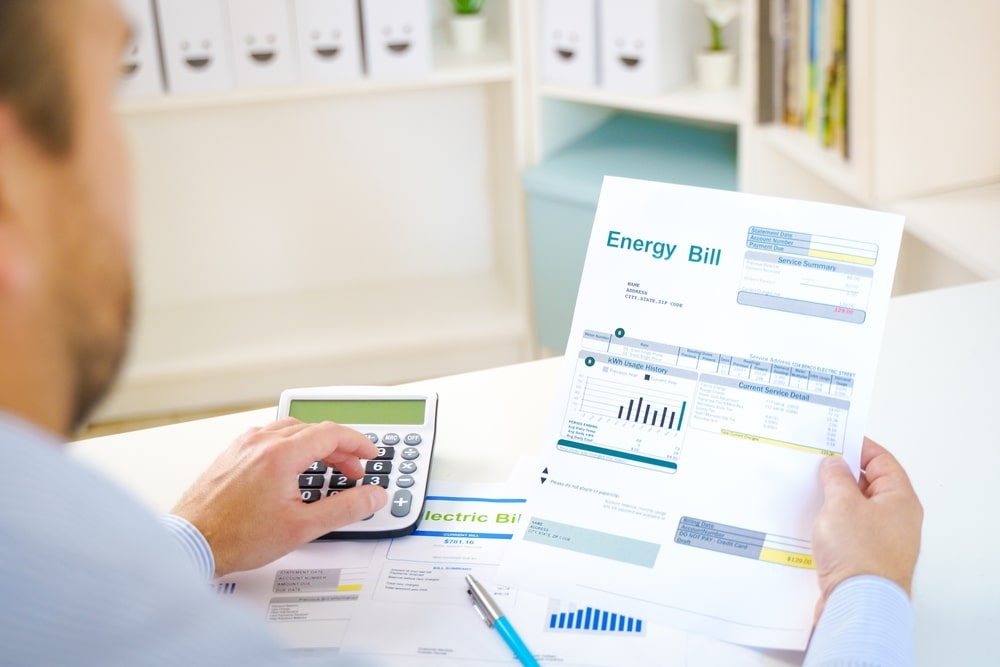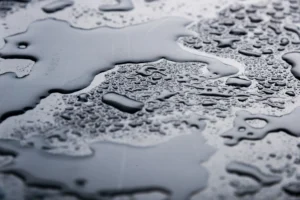Ever wonder why your energy bills skyrocket in the summer even when your habits stay the same? In the Arizona heat, air conditioning isn’t just a luxury; it’s a necessity. However, if you don’t know how to read your energy bill, you’re missing opportunities to save.
At Chandler Air, we’ve helped Arizona residents improve their homes’ energy efficiency and reduce their utility bills in the summer. Our helpful guide will break down what’s on your energy bill, how HVAC usage affects it, and how to lower your energy bill.
Understanding Energy Bill Basics
Your electric bill might look like a confusing mix of numbers, rates, and terminology, but once you break it down, it can reveal exactly where your dollars are going. The two biggest concepts to understand are how much electricity you use and when you use it.
What is kWh vs. kW?
Understanding the difference between kilowatt-hour (kWh) and kilowatt (kW) is the first step in decoding your electric bill. A kWh measures how much energy you’ve used over time, like measuring water in gallons.
In comparison, kW measures electricity demand, or the highest rate at which you’re using electricity at any moment. Think of it like the water pressure from your faucet. Both of these may appear on your bill, especially if you’re on a demand-based plan with a utility like SRP or APS.
Key Sections of Your Bill
Before you can learn how to reduce your energy bill, you also need to know how to read it. Once you understand the basic sections of your bill, you’ll be better equipped to identify where your highest charges originate and how to reduce them.
While the layout of your bill may vary by utility provider, most electric bills include these common sections:
- Supply Charges: The cost of generating your electricity.
- Delivery Charges: What it costs to get that electricity to your home through wires and substations.
- Taxes & Surcharges: Local and state taxes, regulatory fees, and sometimes renewable energy surcharges.
- Meter Readings & Usage History: This helps you compare current and past usage, which can be a valuable tool for spotting seasonal trends.
Arizona Utility Bills: What Makes Them Unique?
Arizona utility companies structure their bills and rate plans based on high summer energy demand. If you’re new to the state or have recently changed plans, here’s what makes Arizona’s electric bills different:
APS vs. SRP Bill Layouts
Arizona’s two largest utility providers, Arizona Public Service (APS) and Salt River Project (SRP), each offer unique rate structures and billing formats:
- APS bills often include “on-peak” vs. “off-peak” usage graphs and emphasize demand charges.
- SRP bills highlight energy consumption across time periods, with clearer day-by-day usage breakdowns for time-of-use plans.
Visually, SRP’s layout is a bit more user-friendly, while APS dives deeper into demand charges and graphs.
Time-of-Use and Demand Charges
Arizona utilities use Time-of-Use (TOU) plans that charge more during high-demand periods. This means that any significant energy usage during busy hours of the day could result in additional fees and charges on your monthly bill.
On-peak hours are typically weekdays from 2 p.m. to 8 p.m., especially in the summer. Rates are much higher during this time. If you’re running your AC hard during on-peak hours, your bill will reflect that spike.
Understanding Seasonal Adjustments
Arizona bills fluctuate dramatically with the seasons, especially between April and October when HVAC usage soars to combat the desert heat. Desert residents can expect to see:
- 30%–50% higher bills during peak summer.
- Additional “seasonal demand charges” or adjustments on certain rate plans.
Even energy-efficient homes may see spikes due to prolonged cooling needs. Tracking these seasonal changes in your usage history can help you better prepare and improve HVAC efficiency.
How Your HVAC System Impacts Energy Usage
In Arizona, your HVAC system is often the single largest contributor to your electric bill, especially during the summer. Understanding just how much it impacts your usage can help you take control of your costs.
HVAC’s Share of Your Bill
According to ENERGY STAR, heating and cooling can account for nearly 50% of a home’s total energy use. And in the peak Arizona heat, that number can be even higher.
Key contributors to high HVAC energy use include:
- Extended use during peak summer months
- Older or inefficient air conditioning units
- Poor insulation or leaky ductwork
- Thermostat settings that are left too low during the day
Spotting Usage Spikes
Most electric bills include a usage history graph or daily kWh breakdown. You can log these spikes monthly and note changes after maintenance or thermostat adjustments to help you track what’s working and make adjustments.
Here’s how to read your bill and keep track of spikes:
- Look for sudden increases in usage around the first major heatwave. This usually indicates when the AC started running more frequently.
- Compare weekdays vs. weekends to understand Time-of-Use patterns.
- If you see high usage during peak hours (2–8 p.m.), this could trigger demand charges on Time-of-Use plans.
How to Lower Your HVAC Energy Costs
Now that you know how to read an energy bill and how your HVAC system affects your expenses, you can start being strategic about lowering costs and usage.
Here are some tips and tricks to lower your energy bill without sacrificing comfort:
Adjust Your Thermostat Settings
According to SRP, making strategic thermostat changes can lower your energy bill by up to 15% during the summer months. Raising your thermostat by just a few degrees can lead to major savings.
While you’re at work or away from home, consider bumping up your thermostat to as high as 85°F. This makes your air conditioning run less, especially during peak hours, to reduce your bill at the end of the month. For every degree you set your thermostat above 80, you can save approximately 2% to 3% on cooling costs.
You can also invest in programmable or smart thermostats to automate temperature control throughout the day.
Implement HVAC Maintenance Tips
Routine HVAC maintenance can drastically improve the efficiency of your system and reduce energy waste. Here are some general maintenance tips you can implement to keep your system running smoothly:
- Change air filters every 1–3 months, depending on the unit
- Schedule regular AC tune-ups to catch issues before they spike your bill
- Seal air ducts to prevent cool air loss
- Clean your outdoor unit and clear debris from vents
Practice Smart Energy Behaviors
A couple of simple lifestyle tweaks can shave down your energy bill without sacrificing your comfort. If you’re wondering how to reduce your energy bill even further, you can try:
- Running ceiling fans clockwise to circulate cool air and raise comfort level
- Pre-cooling your home during off-peak hours, then coasting through peak periods
- Avoiding activities like laundry or cooking during peak times
- Installing blackout curtains or solar screens to reduce indoor heat gain
Energy Incentives & Rebates in Arizona
Reducing your HVAC costs is more than just turning down your thermostat. Homeowners can also take advantage of local and federal programs designed to make energy-efficient upgrades more affordable.
If you’re considering a new AC unit, smart thermostat, or insulation project, Arizona has incentive options that can help cover the cost.
APS/SRP Rebate Programs
Both major utility providers in Arizona offer rebate programs for homeowners who make energy-efficient upgrades. These rebates often require using a participating contractor and may include pre-approval or post-install verification.
Some examples of these rebates include:
- Smart Thermostat Rebates: Get up to $75 back for installing a qualifying smart thermostat.
- HVAC Efficiency Rebates: Replace older systems with high-efficiency units and get up to $1,125 in rebates.
- Duct Sealing Incentives: Rebates are available when you schedule a professional duct sealing service.
Federal Energy Tax Credits
The Inflation Reduction Act expanded federal tax credits for homeowners who are improving their home’s energy efficiency. To claim these credits, save your contractor’s invoice and fill out IRS Form 5695 during tax season.
These credits typically include:
- Up to $2,000 credit for installing high-efficiency air conditioners, heat pumps, or furnaces
- 30% credit for qualifying improvements like insulation, windows, and HVAC upgrades (up to an annual limit)
Next Steps: Partner with Chandler Air to Cut Your Energy Costs
Knowing how to read your energy bill is just the beginning. Once you understand how your energy usage works, you’re in a much better position to take action.
If your bills are climbing and you’re not sure why, Chandler Air is here to help. Our expert HVAC technicians are trained and certified to provide targeted maintenance to reduce energy waste and recommend upgrades that qualify for rebates or tax credits.
Let’s lower that electric bill together. Contact us today to book your tune-up, inspection, or smart thermostat consultation.






License #220891 Residential - Arizona License #220890 Commercial - Arizona